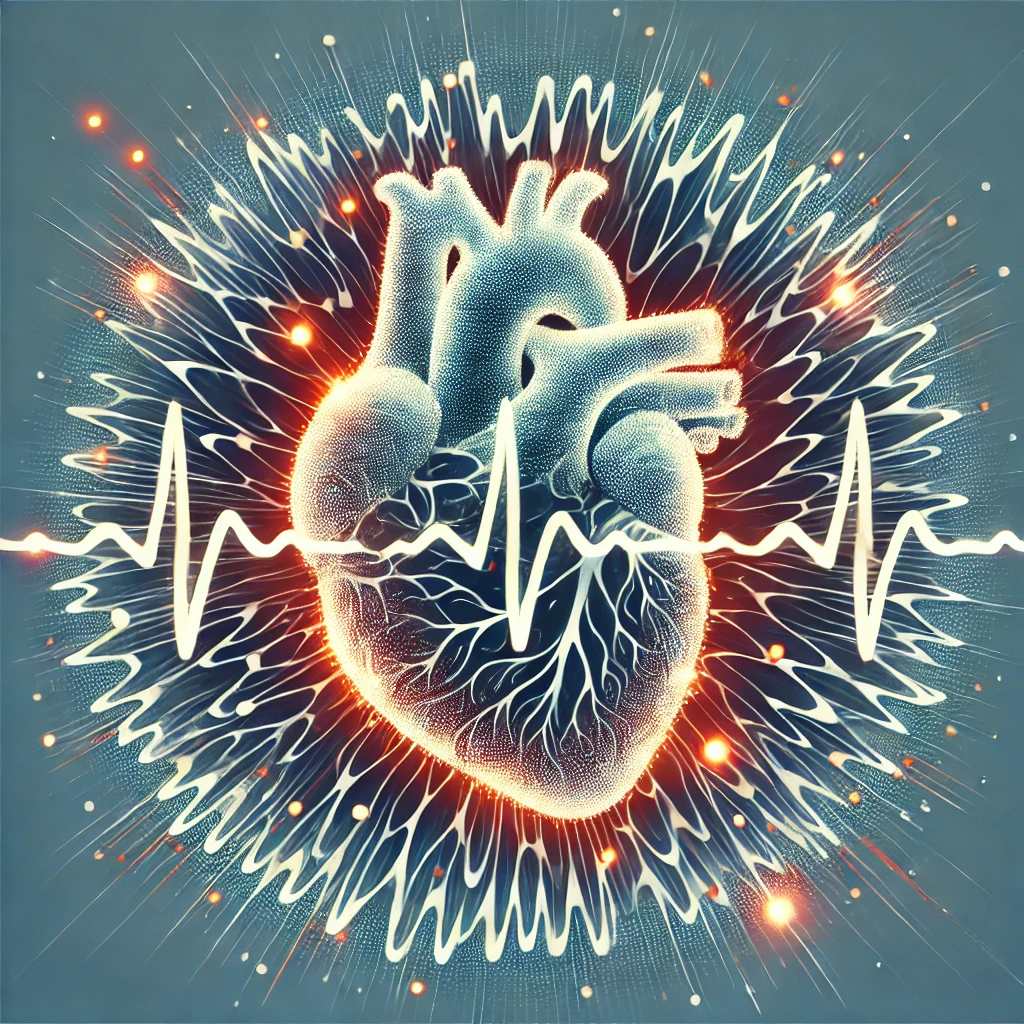Atrial fibrillation (AF) is the most common sustained cardiac arrhythmia, characterized by irregular, rapid atrial electrical activity leading to ineffective atrial contraction. It significantly increases the risk of stroke, heart failure, and mortality.
2. Classification of Atrial Fibrillation
| Type |
Duration |
Characteristics |
| Paroxysmal AF |
<7 days (self-terminating) |
Spontaneously resolves within 48 hours – 7 days |
| Persistent AF |
>7 days |
Requires cardioversion for termination |
| Long-standing Persistent AF |
>12 months |
May not respond to rhythm control |
| Permanent AF |
Persistent despite attempts at cardioversion |
Rate control is the primary strategy |
3. Causes and Risk Factors
| Category |
Common Causes |
| Cardiac Causes |
Hypertension, ischemic heart disease, valvular disease (mitral stenosis, mitral regurgitation), heart failure, cardiomyopathies |
| Non-Cardiac Causes |
Hyperthyroidism, excessive alcohol (holiday heart syndrome), obesity, sleep apnea, chronic lung disease |
| Surgical/Procedural |
Post-cardiac surgery, pericarditis, pulmonary embolism |
4. Pathophysiology
- Ectopic foci in pulmonary veins trigger multiple micro-reentrant circuits in the atria.
- Loss of atrial contraction (atrial kick) leads to stasis of blood, predisposing to thrombus formation.
- Irregular ventricular response causes tachycardia-induced cardiomyopathy over time.
5. Clinical Features
| Symptoms |
Signs |
| Palpitations |
Irregularly irregular pulse |
| Dyspnea |
Variable pulse volume |
| Fatigue |
Signs of heart failure (if longstanding) |
| Syncope or dizziness |
Embolic phenomena (stroke, limb ischemia) |
6. Diagnosis of Atrial Fibrillation
(A) ECG Findings (Gold Standard)
| ECG Feature |
Description |
| Irregularly Irregular Rhythm |
No consistent R-R interval |
| Absent P Waves |
Chaotic atrial electrical activity |
| Fibrillatory Waves (f waves) |
Baseline undulations |
| Narrow QRS Complex |
Atrial-origin rhythm unless associated with bundle branch block |
(B) Investigations to Identify Underlying Cause
| Test |
Purpose |
| Echocardiography (TTE/TEE) |
Assess for valvular disease, atrial size, thrombus (TEE) |
| Thyroid Function Tests |
Rule out hyperthyroidism |
| Electrolytes & Renal Function |
Detect metabolic causes |
| Holter Monitoring |
Detect paroxysmal AF |
7. Management of Atrial Fibrillation
Management is based on stroke risk reduction, rate control, or rhythm control.
(A) Stroke Prevention: CHA₂DS₂-VASc Score
Determines the need for anticoagulation.
| Risk Factor |
Points |
| C – Congestive heart failure |
1 |
| H – Hypertension |
1 |
| A₂ – Age ≥75 years |
2 |
| D – Diabetes mellitus |
1 |
| S₂ – Stroke/TIA/thromboembolism |
2 |
| V – Vascular disease (MI, PAD) |
1 |
| A – Age 65-74 years |
1 |
| S – Sex (Female) |
1 |
| CHA₂DS₂-VASc Score |
Anticoagulation Recommendation |
| 0 (Men), 1 (Women) |
No anticoagulation |
| 1 (Men), 2 (Women) |
Consider anticoagulation |
| ≥2 (Men), ≥3 (Women) |
Strongly recommend anticoagulation |
Anticoagulation Options:
| Drug Class |
Examples |
Indications |
| Vitamin K Antagonist |
Warfarin (INR 2-3) |
Preferred in valvular AF |
| Direct Oral Anticoagulants (DOACs) |
Apixaban, Rivaroxaban, Dabigatran |
Preferred in non-valvular AF |
🚨 Valvular AF (e.g., rheumatic mitral stenosis) must be treated with Warfarin.
(B) Rate vs. Rhythm Control
| Approach |
First-Line Medications |
Indications |
| Rate Control |
Beta-blockers (Metoprolol, Bisoprolol), CCBs (Diltiazem, Verapamil), Digoxin |
Older patients, asymptomatic, persistent AF |
| Rhythm Control |
Antiarrhythmics (Amiodarone, Flecainide, Sotalol), Electrical Cardioversion |
Younger patients, symptomatic, paroxysmal AF |
🚨 Rate control is preferred for most patients as first-line management.
(C) Cardioversion (Electrical or Pharmacological)
| Scenario |
Cardioversion Strategy |
| Unstable AF (Hypotension, HF, angina, syncope) |
Immediate synchronized DC cardioversion |
| Stable AF (Duration <48 hours) |
Pharmacological or electrical cardioversion without anticoagulation |
| Stable AF (Duration >48 hours or unknown duration) |
Anticoagulation for ≥3 weeks before cardioversion or perform TEE to rule out thrombus |
Pharmacological Cardioversion Options:
| Drug |
Indication |
| Amiodarone |
Structural heart disease |
| Flecainide/Propafenone |
No structural heart disease |
| Ibutilide |
Alternative for recent onset |
(D) Catheter Ablation
| Indication |
Procedure |
| Symptomatic AF refractory to medications |
Pulmonary vein isolation |
| AF with heart failure |
AV node ablation + pacemaker implantation |
8. Complications of Atrial Fibrillation
🚨 Stroke or Systemic Embolism (5x increased risk)
🚨 Heart Failure (Tachycardia-induced cardiomyopathy)
🚨 Myocardial Ischemia (Reduced cardiac output)
🚨 Sudden Cardiac Death (Rare, but possible)
9. Key Takeaways
✅ Irregularly irregular pulse + absent P waves = Atrial Fibrillation
✅ Stroke risk assessed using CHA₂DS₂-VASc score
✅ Rate control is first-line therapy unless symptomatic
✅ Warfarin required for valvular AF, DOACs preferred for non-valvular AF
✅ Catheter ablation is an option for refractory cases

